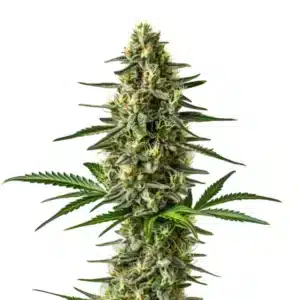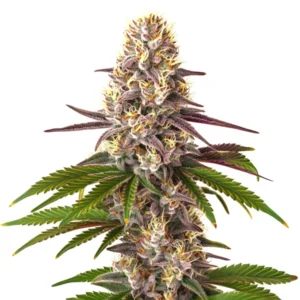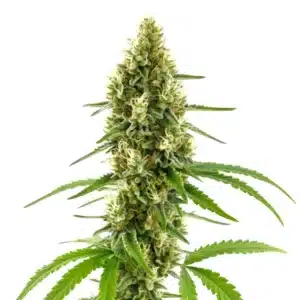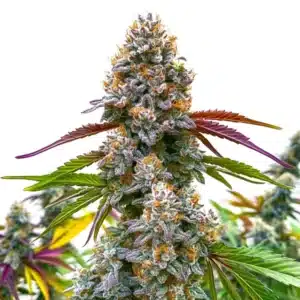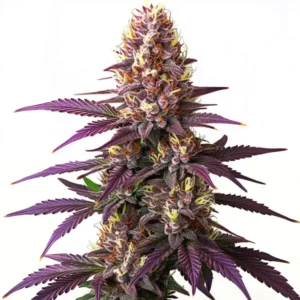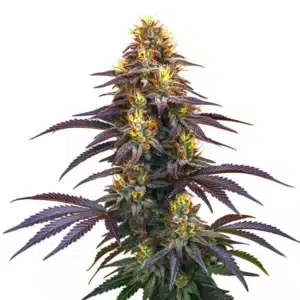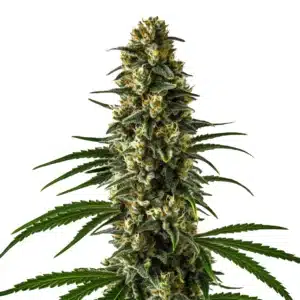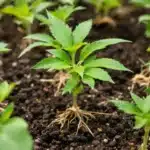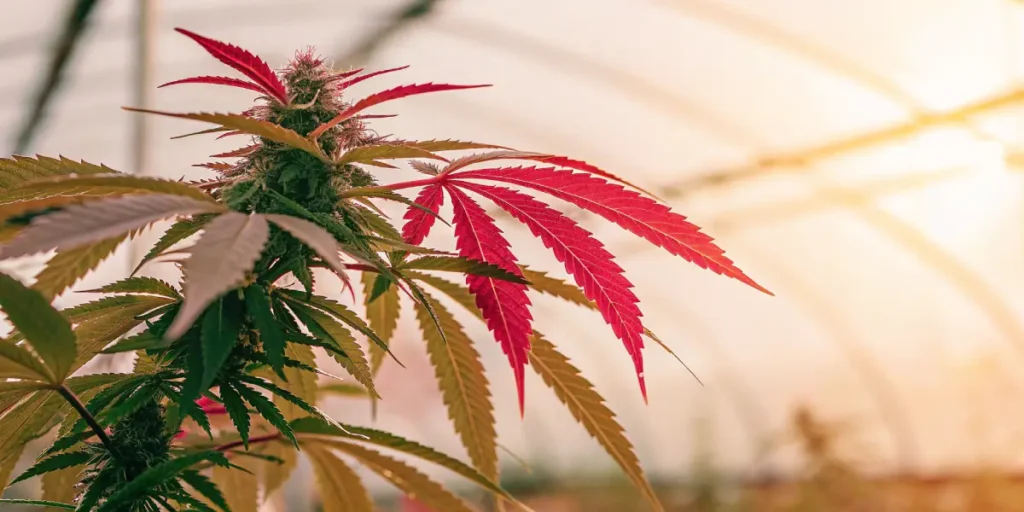
ROS as a Natural Defense Mechanism in Marijuana
Reactive oxygen species (ROS) serve as a natural defense mechanism in marijuana, playing a crucial role in how plants protect themselves. Think of ROS as a type of stress response that helps cannabis plants fend off various threats. By knowing how ROS functions, growers can make informed decisions to optimize plant health.
ROS in marijuana are molecules that include free radicals, which are highly reactive due to unpaired electrons. While they sound harmful, these molecules actually help the plant by acting as signals for different defense systems. When a cannabis plant experiences stress, ROS levels increase, triggering protective responses.
Recommended Strains
GG4
|
|
THC | 27% (High) |
|
|
Type | Feminized |
|
|
Yield | High |
|
|
Phenotype | 40% Indica / 60% Sativa |
Blue Dream
|
|
THC | 17% - 24% (Medium) |
|
|
Type | Feminized |
|
|
Yield | High |
|
|
Phenotype | 50% Indica / 50% Sativa |
Even though ROS can be damaging in large quantities, in controlled amounts, they are essential for activating the plant’s defense mechanisms. This delicate balance is key to the plant’s survival and growth. By managing ROS levels, growers can enhance the plant’s natural resilience.
Reactive Oxygen Species in Cannabis Defense
In the realm of marijuana cultivation, understanding reactive oxygen species in cannabis defense is vital. These molecules play a significant part in how the plant reacts to external stressors, such as pests, diseases, and environmental changes. When these challenges arise, ROS levels naturally increase.
ROS do more than just signal other defense mechanisms. They also help repair damaged cells and tissues. This makes them a crucial part of the plant’s overall health strategy. For example, when a leaf is attacked by pests, ROS can help the plant seal off the damaged area, preventing further harm.
Moreover, the role of ROS in cannabis plant protection extends to helping the plant adapt to changing environmental conditions. By modulating ROS levels, plants can better cope with stresses like temperature fluctuations and drought. This adaptability is a key factor in the success of marijuana natural defense mechanisms ROS.
Additionally, growers who understand the dynamics of ROS as a natural defense mechanism in marijuana can tailor their cultivation practices to enhance plant resilience. By optimizing factors such as soil composition and watering schedules, they ensure that plants can effectively utilize ROS for defense without succumbing to oxidative stress.
Oxidative Stress Response in Marijuana
Oxidative stress occurs when there’s an imbalance between ROS and antioxidants. In marijuana, this stress response is a double-edged sword. On one hand, it can lead to cell damage if not properly managed. On the other, it’s a vital part of the plant’s defense system.
When oxidative stress is well-regulated, it helps the plant activate defense genes. This boosts the plant’s ability to withstand adverse conditions. Experienced growers often monitor their plants for signs of oxidative stress, adjusting light, water, and nutrients to maintain balance.
Knowing the oxidative stress response in marijuana is crucial for preventing damage while still benefiting from the protective effects of ROS. By closely observing their plants, growers can identify the first signs of oxidative stress and take corrective actions to balance ROS levels effectively.
Incorporating practices that limit excessive ROS production, such as using shade cloths or optimizing irrigation, can help maintain a beneficial oxidative stress response in marijuana. These practices allow growers to harness the positive aspects of ROS, ensuring robust plant health and high-quality yields.
Promos & Deals
Antioxidant Defense in Cannabis Plants
Antioxidants in marijuana play a complementary role to ROS. They help neutralize excessive reactive oxygen species, maintaining a balance that allows the plant to thrive. Antioxidants are like the plant’s internal cleanup crew, preventing damage from unchecked ROS.
Growers can enhance the antioxidant defense in cannabis plants by ensuring they receive optimal nutrition. Nutrients such as vitamin C and E, along with certain minerals, can boost the plant’s natural antioxidant levels. This helps keep ROS in check, reducing the risk of damage.
The antioxidant defense in cannabis plants is integral to their ability to manage stressors effectively. By maintaining a balanced internal environment, antioxidants support the plant’s overall health and resilience, allowing it to flourish in diverse conditions.
Furthermore, antioxidants not only protect the plant from the potential harm of excessive ROS but also play a pivotal role in growth and development. By integrating antioxidant-rich fertilizers and supplements, growers can enhance the plant’s natural defense mechanisms, ensuring a robust growth cycle.
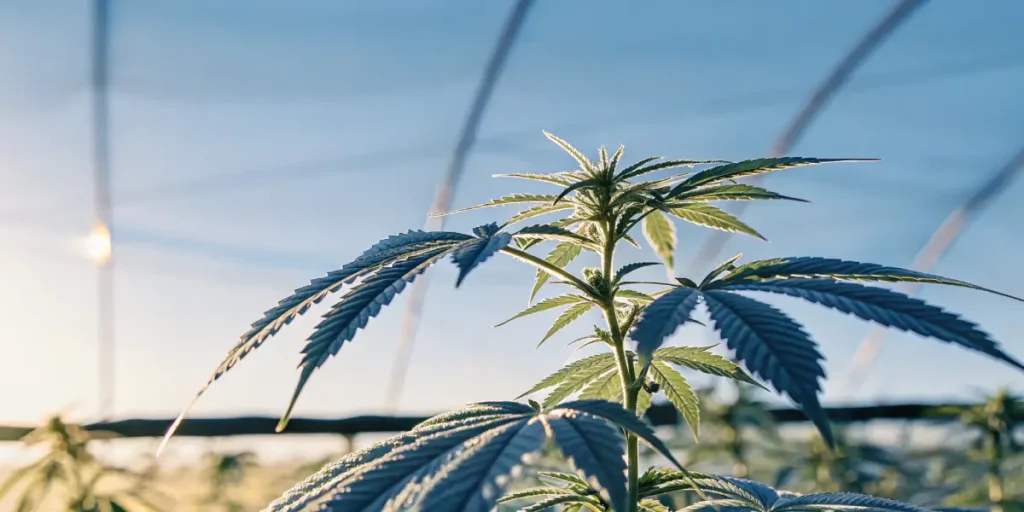
Marijuana Natural Defense Mechanisms ROS
Various strains of marijuana have different capabilities when it comes to ROS as a natural defense mechanism. For example, strains like “Blue Dream” from Blimburn Seeds are known for their resilience. They naturally manage ROS effectively, making them a popular choice for growers facing challenging conditions.
Another strain, “Gorilla Glue #4“, is also noteworthy for its robust natural defense systems. This strain can handle a variety of stressors, thanks in part to its efficient ROS management. It’s a prime choice for those looking for a hardy and productive plant.
Strains that exhibit strong marijuana natural defense mechanisms ROS are often preferred for their ability to withstand environmental pressures. By choosing these strains, growers can benefit from their inherent resilience and high yield potential.
Additionally, knowing the specific needs and ROS role in cannabis plant protection of each strain can enable growers to tailor their cultivation practices. This ensures that each plant can thrive in its environment, maximizing its natural defense capabilities and overall productivity.
Practical Tips for Managing ROS
Managing ROS levels effectively can lead to healthier plants and better yields. Here are some practical tips for growers to consider:
- Ensure proper ventilation in your growing area to prevent excessive heat and humidity, which can increase ROS production.
- Regularly check your plants for signs of stress, such as wilting or discoloration, and adjust growing conditions accordingly.
- Consider using organic fertilizers that contain natural antioxidants to help your plants maintain a healthy balance of ROS.
By staying attentive to your plants’ needs, you can harness the power of ROS as a natural defense mechanism in marijuana. This will not only improve plant health but also enhance the quality of your harvest.
Implementing these strategies helps in managing ROS levels effectively, ensuring that the delicate balance between ROS and antioxidants is maintained. This balance is crucial for optimizing the plant’s defense systems while promoting vigorous growth and maximizing yield potential.
Moreover, by regularly refining their growing techniques and staying informed about the latest advancements in cannabis cultivation, growers can continuously improve their ability to manage ROS. This proactive approach supports long-term success in producing healthy and high-quality marijuana plants.
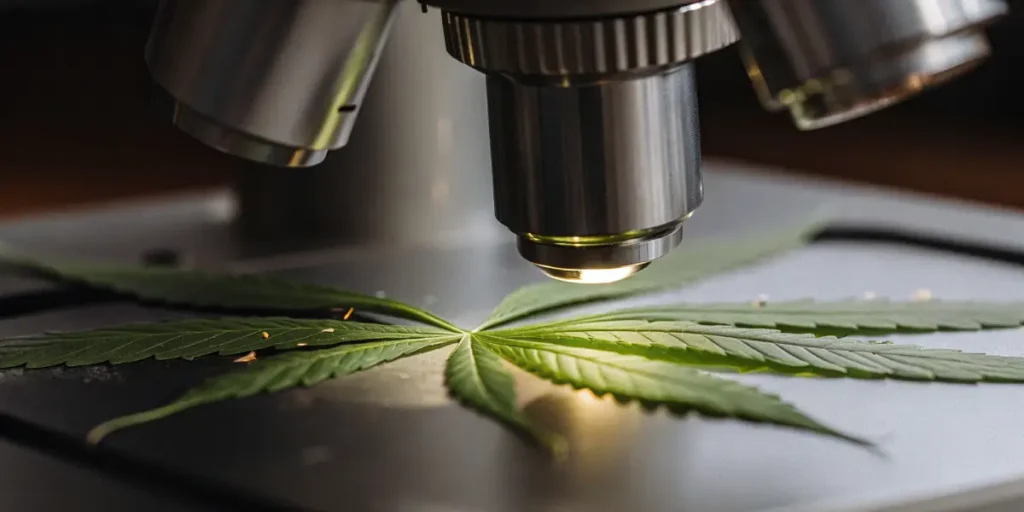
FAQs
What are Reactive Oxygen Species in cannabis?
Reactive oxygen species in cannabis are molecules that help the plant respond to stress. They include free radicals that, while potentially harmful in large amounts, are essential for signaling defense mechanisms. When a cannabis plant is stressed, ROS levels rise, helping the plant to activate its natural defenses.
These molecules play a pivotal role in the plant’s ability to withstand environmental challenges, such as pests and diseases. Knowing how they function can help growers optimize conditions for healthier plants. By managing light, water, and nutrients, growers can help maintain a beneficial balance of ROS.
The role of ROS in cannabis plant protection extends beyond immediate stress responses. They are involved in long-term adaptive processes that improve the plant’s resilience to future stressors, making them indispensable allies in cultivation.
By fostering a deeper understanding of reactive oxygen species in cannabis defense, growers can adopt practices that enhance their plants’ ability to self-regulate and thrive. This knowledge is crucial for cultivating robust and healthy marijuana crops.
How does oxidative stress affect marijuana plants?
Oxidative stress in marijuana occurs when there’s an imbalance between ROS and antioxidants. This can lead to cell damage if not properly controlled. However, it’s also a crucial part of the plant’s defense system, helping to activate defense genes and boost resilience against stressors.
Growers can mitigate oxidative stress by monitoring the growing environment closely. Providing optimal light, water, and nutrients can help maintain balance, reducing the risk of damage and promoting plant health. This approach ensures that ROS levels remain beneficial rather than harmful.
Recognizing the signs of oxidative stress response in marijuana is crucial for taking timely action. Early intervention can prevent irreversible damage and support the plant’s natural healing processes.
By tailoring cultivation practices to minimize stressors and promote balance, growers can enhance the effectiveness of marijuana natural defense mechanisms ROS. This proactive approach is key to achieving consistent and high-quality yields.
What strains are good at managing ROS naturally?
Some strains are particularly adept at managing ROS as a natural defense mechanism. “Blue Dream” from Blimburn Seeds is one such strain, known for its resilience and ability to thrive in various conditions. It’s a great option for both novice and experienced growers.
Other strains like “Gorilla Glue #4” and “Critical Daddy Purple” also demonstrate strong natural defense capabilities. These strains are well-suited to growers dealing with environmental stressors, offering robust growth and high yield potential.
Choosing strains with a proven track record of effective ROS management can significantly simplify cultivation, as these plants require less intervention and exhibit greater stability in diverse environments.
Furthermore, understanding the specific traits and needs of each strain can aid in optimizing growing conditions. This knowledge supports the development of tailored strategies that enhance the natural defense mechanisms of each plant.
Can antioxidants help with ROS management in cannabis?
Yes, antioxidants play a crucial role in managing ROS levels in cannabis plants. They help neutralize excessive ROS, preventing potential damage and maintaining a healthy balance. Antioxidants essentially act as the plant’s internal defense system, keeping ROS in check.
Growers can enhance antioxidant levels by providing nutrient-rich fertilizers and ensuring their plants receive adequate vitamins and minerals. This not only supports ROS management but also contributes to overall plant health and productivity.
The integration of antioxidants into the cultivation process can significantly bolster the plant’s resilience, allowing it to focus its energy on growth and reproduction rather than damage control.
By understanding the interplay between ROS and antioxidants, growers can develop effective strategies to optimize plant health. This ensures that plants are equipped to manage stressors and thrive in their growing environment.
Why is it important to manage ROS in marijuana cultivation?
Managing ROS is vital for maintaining healthy and productive cannabis plants. While ROS are essential for activating the plant’s defense mechanisms, excessive levels can lead to oxidative stress and potential damage. This makes it crucial for growers to monitor and regulate ROS carefully.
By understanding and managing ROS, growers can optimize plant conditions, enhance natural defenses, and ultimately improve yield quality. This approach ensures that plants remain resilient against pests, diseases, and environmental changes, leading to successful cultivation.
Effective ROS management is not only about preventing damage but also about maximizing the plant’s potential. By keeping ROS levels in check, growers enable the plant to allocate resources efficiently, supporting robust growth and abundant yields.
Ultimately, the ability to manage ROS as a natural defense mechanism in marijuana is a critical skill for any grower. It empowers them to create optimal growing conditions that support both the plant’s immediate needs and its long-term success.




